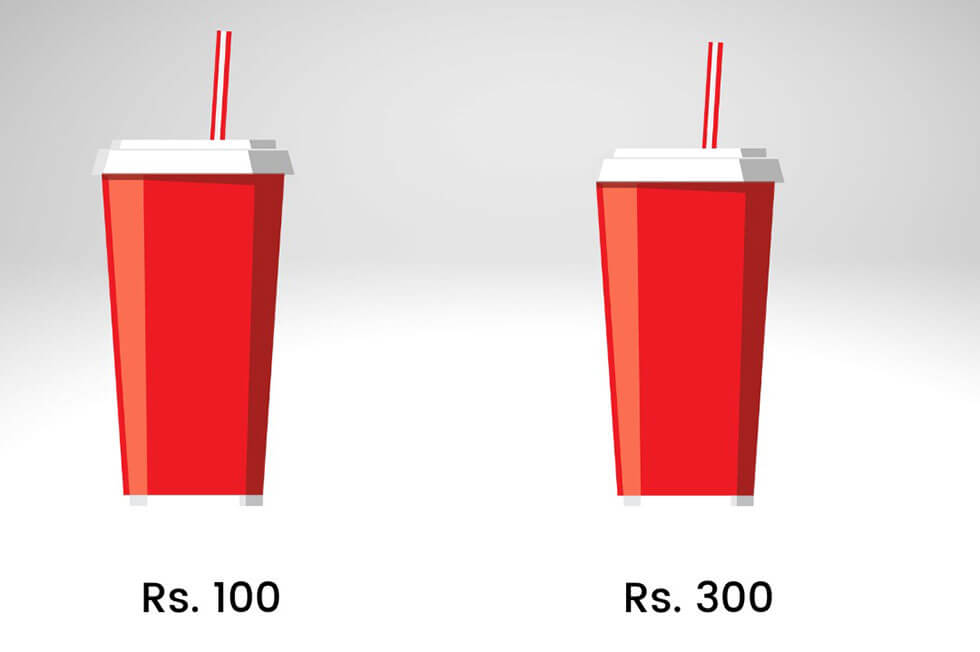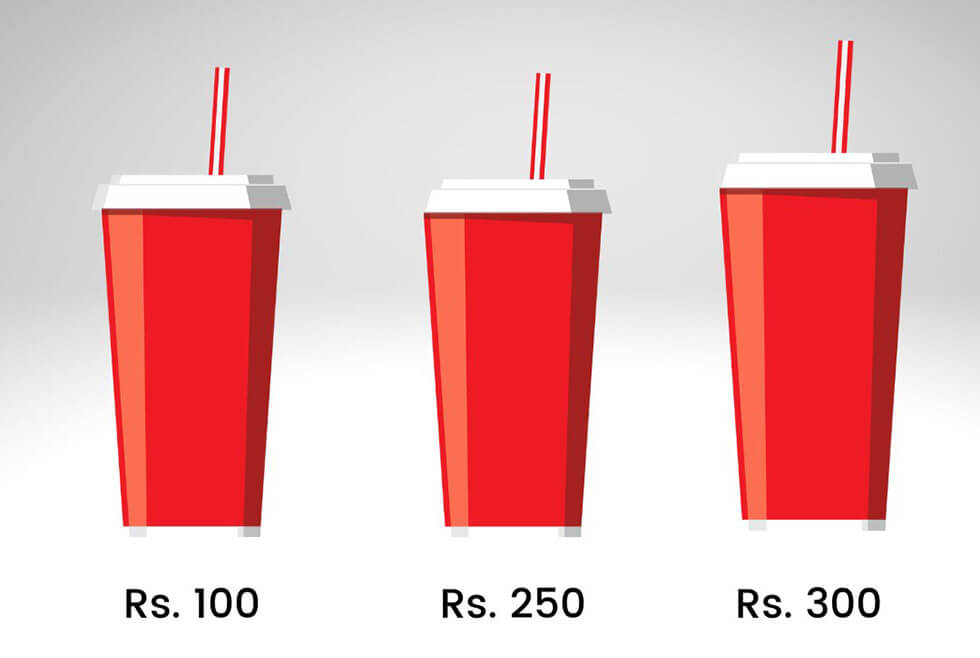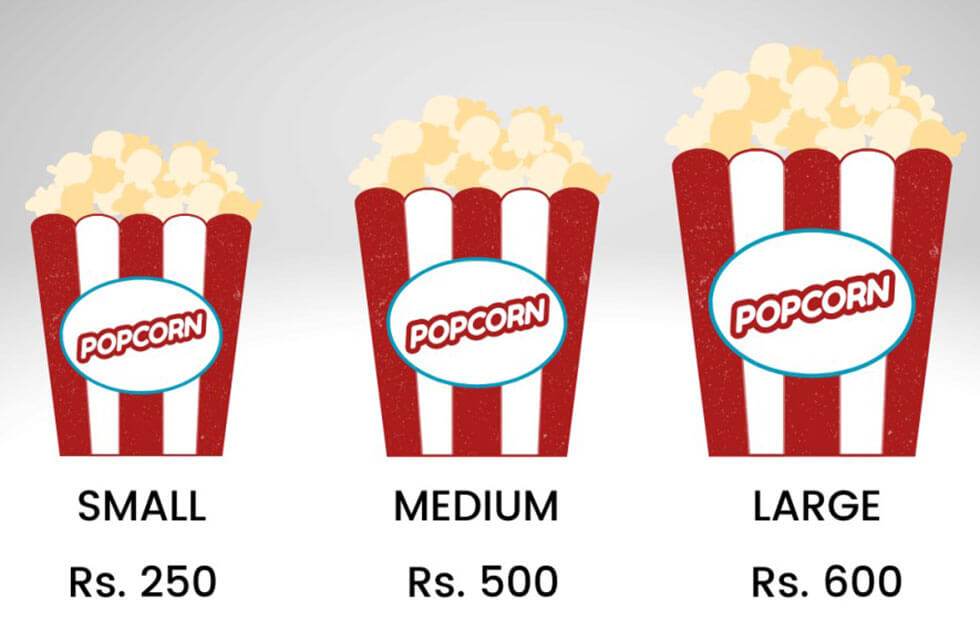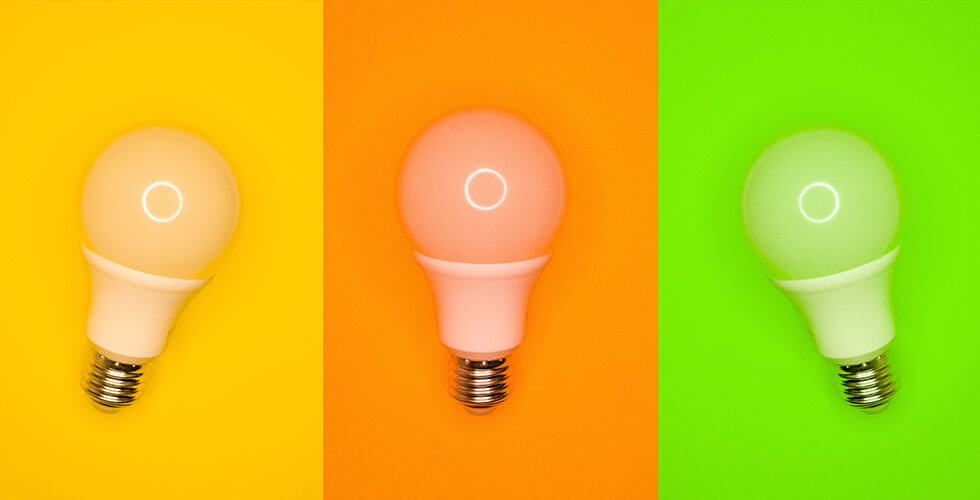This blog will explore “The decoy effect” and examples that relate it to how companies determine their marketing strategy, as well as pricing strategy to control what we buy.
Let’s first understand the meaning of decoy –
Decoy means to trick somebody or something into what you want.
The Decoy Effect describes how price comparisons between products affect choice. It occurs when people tend to have a change in preference between two options when a third, asymmetrically dominated option is presented.
When there are only two options, and they’re priced “fairly,” people make decisions according to personal preference.

But, if there’s a third choice that’s overpriced compared to the first two options, it changes how people consider all of the options. The third option is a “decoy” choice.

The Decoy Pricing Strategy boosts sales of high profit products by creating another version of that product with an unreasonable price. The marketers price the new product just below the highest priced product. When the customers start comparing these products, the unreasonable price also known as decoy price will make the expensive one seem economical and reasonable. This leads to ‘decoy effect’.
Let’s understand with an example which we all must have experienced –

Who doesn’t like to watch a movie in the theater? Obviously, movie without popcorn is no fun. In the movie houses, you get popcorn of small, medium, and large at a price of rupees 250, 500, 600 respectively.
- Option A (Small): Overpay for the popcorn
- Option B (Medium): Extremely overpay for the popcorn
- Option C (Large): Extreme overpay for the popcorn with a little extra popcorn.
Considering the above given options. The large size looks appealing, doesn’t it? While there is a Rs.350 difference between small and large size, there is only Rs.100 difference between medium and large. Through simply adding a third option (the decoy option), stores can convince you to go for the pricier item even though you don’t need it. As a buyer, when you’re presented with 3 options your thinking pattern changes.
The larger Rs. 600 option is suddenly a lot more appealing and the price point suddenly looks like a better deal altogether. But why? Well, the customer is not comparing the small popcorn against the large popcorn anymore. They’re now comparing the medium popcorn against the larger popcorn. Since the difference between the large and medium is significantly small, they’re now seeing the larger option as a lot more reasonable.
You are not alone in this decision, nor are you the first person to make this call. You have gone with the decision that many people are likely going to end up with.
“Humans rarely choose things in absolute terms. We don’t have an internal value meter that tells us how much things are worth. Rather, we focus on the relative advantage of one thing over another, and estimate value accordingly.”
The Bottom Line:
A behavioral change, decoy, affects us subconsciously and may alter how we think and make decisions. The Decoy effect or the Attraction effect is a widely used tool by marketers around the world. While it is true that the decoy effect has its set of advantages, from the consumer’s perspective, it mostly works in the favor of companies employing the strategy.
So think well and think hard before heading to that store near you!
Nupur Shah is a CERTIFIED FINANCIAL PLANNER (CFP) from FPSB, USA and a Finance content creator. She is working as a Wealth Manager at UpperCrust Wealth Pvt. Ltd.

